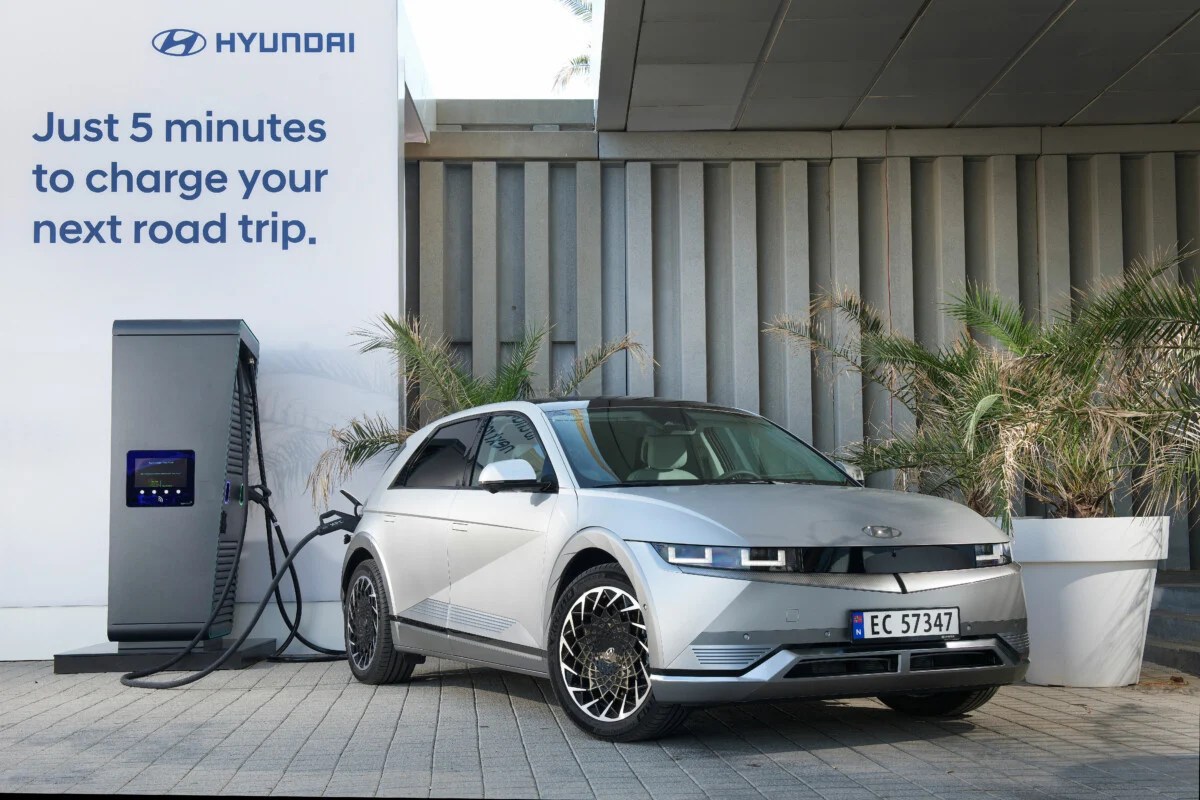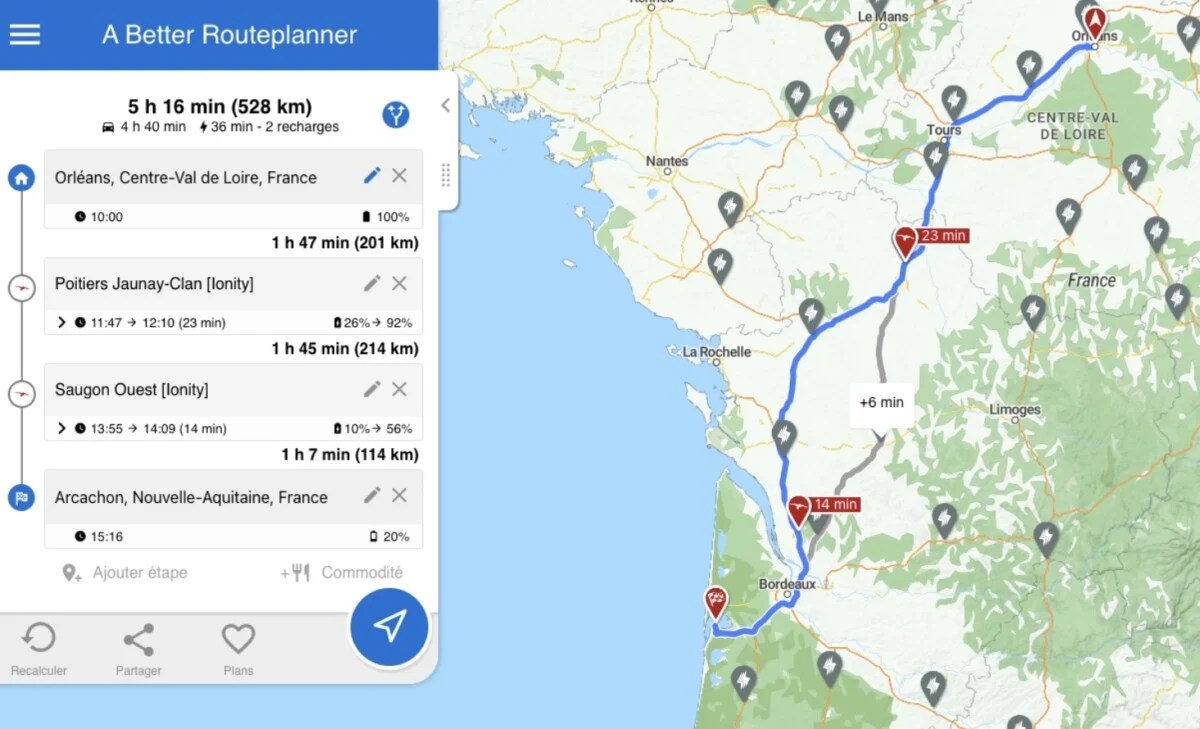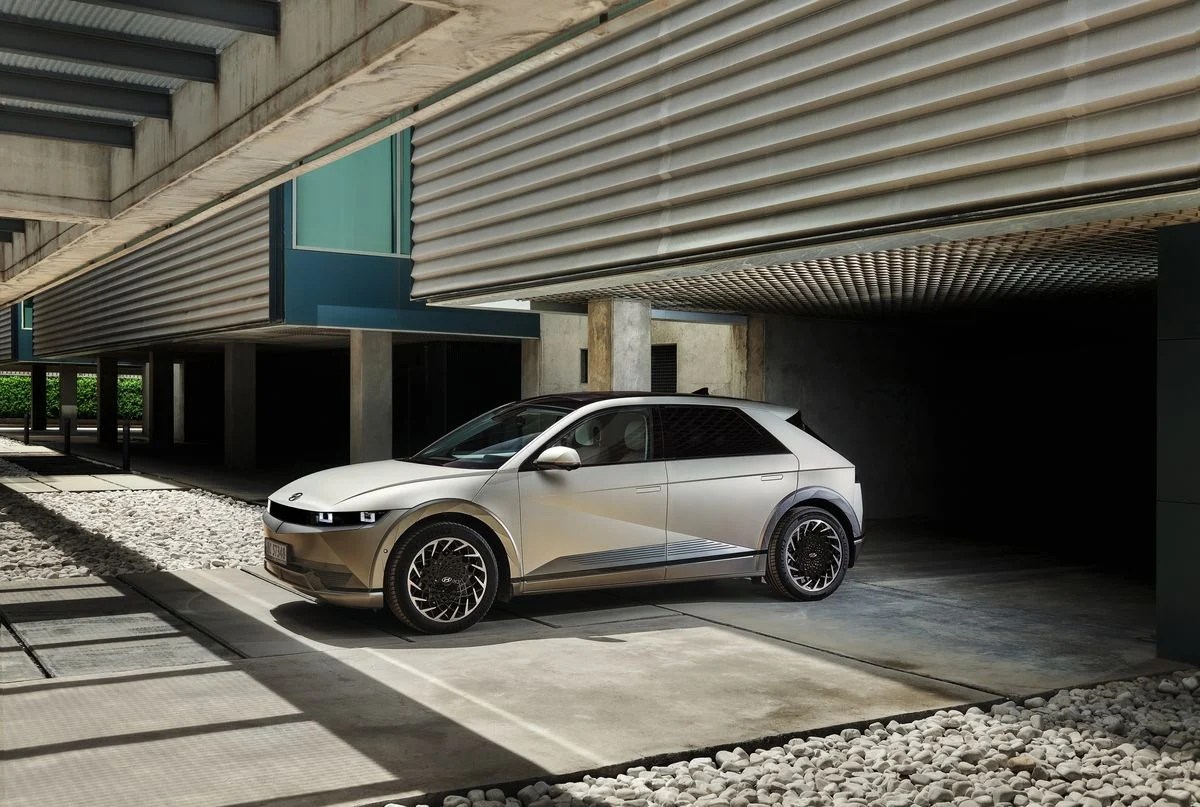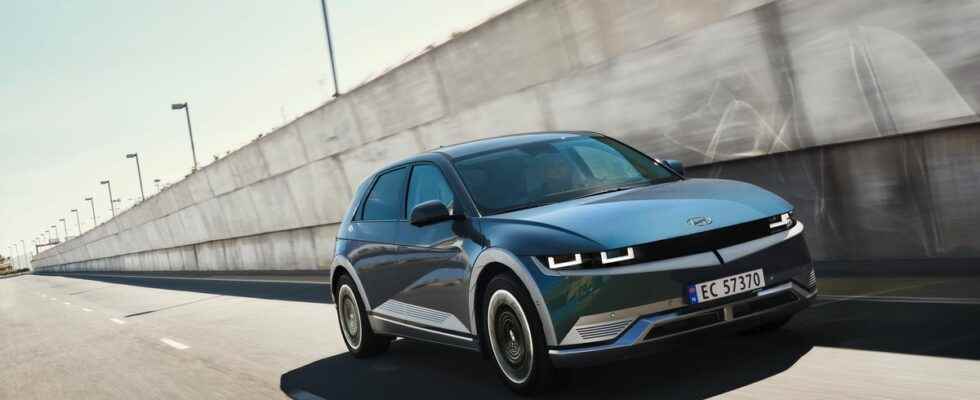The Hyundai Ioniq 5 is going to be put through its paces today in our series of great electric car journeys. On our two reference courses, how does it compare to other vehicles? Will this fast charging champion do better than the others?
After showing you the example of the Tesla Model 3 Propulsion, Kia EV6 58 kWh and Tesla Model 3 Grande Autonomie, it’s the turn of the Hyundai Ioniq 5 to be put to the dreaded test of long journeys in an electric car. .
We always keep the same rules for this series, namely: the departure is carried out with 100% battery, the arrival at 20%, and the vehicle must travel at the limit speeds. We will first recall the technical characteristics of the Hyundai Ioniq 5 (autonomy, battery, charging power) and compare them to the reality on the ground.
In this way, thanks to the comparative table that you will find below, you will be able to define the car that will suit you best, and which will be the fastest to reach your destination. It’s the moment of truth for the Hyundai Ioniq 5.
Features of the Hyundai Ioniq 5
The Hyundai Ioniq 5 can boast of being the main vehicle of a household since it is cut out for long journeys. Indeed, with an autonomy in the WLTP cycle which reaches 507 kilometers, crossing France should not pose too many worries, even if it means using the (very) fast charge it offers.

With a passage from 10 to 80% of battery in just 18 minutes, the Ioniq 5 impresses. It is also one of the champions of fast charging, quite simply. During this simulation, we will use the various fast charging networks available to us in France and will therefore be required to fill the battery with electrons at Ionity, Fastned, Totalenergies or even on the Tesla Superchargers open to all.
Of course, the network of the territory in fast charging stations is essential so that the Hyundai Ioniq 5 can charge as efficiently as possible. We will see below how it is doing in the current state of the French fast charging fleet. As always, we’ll use the excellent A Better Route Planner to plan the routes, with the default consumption benchmark for the Hyundai Ioniq 5 rear-wheel drive.
Route planning
In order not to favor certain vehicles to the detriment of others in the breakdown of costs, we start trips at 100% battery, counting what it would cost at the average price of kWh in France, located at 0.17 euro today. The 77 kWh of the battery of the Hyundai Ioniq 5 then represent €13.10. We will then add this cost to the price of fast charges during trips.
In order to simulate a summer vacation, the first major journey is to connect Orléans to Arcachon (530 kilometers). The winter route starts in Caen and ends in Chamonix-Mont-Blanc (850 kilometres). We will then have an overview of two reference routes in the Hyundai Ioniq 5, in very different conditions.
For the summer route, the parameters indicated in A Better Route Planner are as follows: 25 degrees Celsius outside temperature, no wind, arrival at a charging station with 10% battery remaining, and arrival at destination at 20% . For the winter trip, it’s essentially the same, apart from the weather, where we chose a temperature of 0 degrees Celsius.
The balance sheet of the different routes
500 kilometers with more than 30 minutes of charge
Despite being advertised with over 500 kilometers of WLTP range, the Hyundai Ioniq 5 fails to travel more than 500 kilometers with even a single charging stop. Indeed, under the imposed conditions of the exercise (departure at 100% and arrival at destination at 20%), it is necessary to stop twice to reach Arcachon from Orléans.
The first stop is at an Ionity station around Poitiers, to go from 26 to 92% battery in 23 minutes. This is the big strength of the Hyundai Ioniq 5: it does not need to charge very long to gain a lot of battery. This 23-minute stop costs 35 euros at the current Ionity rate of 0.69 euros per kWh.

A little over 200 kilometers further, another stop at Ionity is necessary to add 46% of battery in less than 15 minutes, at a cost of 24 euros. This is enough to arrive at your destination with 20%, as imposed.
Another possibility would have been not to use the highway between Poitiers and Bordeaux, but two stops would also have been necessary, which does not improve the total travel time.
In total, the Hyundai Ioniq 5 charged 36 minutes for a total of 59 euros, to which must be added the cost of starting home charging estimated at just over 13 euros. The total for this summer trip is thus estimated at 72 euros.
Note that the estimated consumption for this trip is 251 Wh / km, which would give a theoretical autonomy of just 305 kilometers, far from the 507 kilometers WLTP promised by the manufacturer.
Less than 90 minutes charge for 850 kilometers
During the simulation of the long winter journey between Caen and Chamonix-Mont-Blanc, we notice the strength of the Hyundai Ioniq 5: the very, very fast charge. Indeed, while many electric cars need one or more long breaks in a journey like this, the longest charging stop for the Ioniq 5 barely exceeds 25 minutes.
It takes five stops all the same to get there, but we will see that they are rather very fast. The first stop is at a Totalenergies station, for 22 minutes, and allows you to go from 20 to 78%. The per-minute pricing (0.65 euro) of the Totalenergies terminals benefits the Ioniq 5, which will pay 14 euros for this charge.
170 kilometers further, the longest recharge of the journey is at an Ionity station for 26 minutes: it ensures to add nearly 80% of battery for all the same 42 euros. Then arrive in Beaune where a Supercharger open to all is available: charging from 10 to 57% is billed around 25 euros at the current rate of 0.68 euro per kWh.

The density of fast chargers in certain French regions means that it is not possible to optimize all stops. This is the case for the end of the journey. Indeed, once you have left Beaune, it is necessary to recharge in Mâcon (Ionity for 15 minutes and 26 euros) after only 45 minutes of driving.
The last charge is at the Tesla Supercharger in Saint-Julien-en-Genevois, for 14 minutes and also 25 euros, which is enough to arrive in Chamonix with 20% battery. In total, therefore, there were 1 hour and 29 minutes of charging, at a cost of 132 euros. Adding the starting home load, this gives a total of 145 euros for this winter journey of 850 kilometers.
Estimated fuel consumption, including winter cold, high speeds and positive elevation is 291 Wh/km, giving a theoretical range of just 260 kilometers with 100% battery.
Consumption, cost of recharging and range
We summarize the costs and charging times (including home charging at 13 euros) in the table below. You can thus visualize as we go through our examples where the vehicle you are interested in is positioned in relation to the others on a similar journey.
| Vehicle | Summer ride cost | Summer ride charging time | Total summer journey time |
|---|---|---|---|
| Tesla Model 3 Drive | 36 – 49 € | 31 mins | 5 h 09 min |
| Tesla Model 3 Long Autonomy | 31 – 45 € | 13 – 25 mins | 4 hrs 56 mins |
| Kia EV6 58kWh | 52 – 60 € | 38 – 43 mins | 5 hrs 30 mins |
| BMW i4 | 48 – 58 € | 22 – 37 mins | 5 hrs 11 mins |
| Hyundai Ioniq 5 | 72 € | 36 mins | 5 hrs 16 mins |
| Vehicle | Winter trip cost | Winter ride charging time | Total winter journey time |
|---|---|---|---|
| Tesla Model 3 Drive | 102 € | 1 hr 42 mins | 9:16 a.m. |
| Tesla Model 3 Long Autonomy | 101.3 € | 1 hr 02 mins | 8:27 a.m. |
| Kia EV6 58kWh | 120 € | 1hr 54mins | 9 h 59 min |
| BMW i4 | 147 € | 1 hr 32 mins | 9 h 08 min |
| Hyundai Ioniq 5 | 145 € | 1hr 29mins | 9:14 a.m. |
Conclusion
Although carried out smoothly, the summer trip requires two charges where other vehicles in the same exercise only need one, in particular one of its rivals: the Tesla Model 3 Grande Autonomie. Worse, even the Tesla Model 3 Propulsion (with a significantly smaller battery) doesn’t need as much charging time on the summer commute, again showing that charging speed isn’t everything , the vehicle must not consume too much either.
With a cost per 100 kilometers for the summer journey of 13.60 eurosthe Hyundai Ioniq 5 is very far from reaching costs comparable to a Tesla Model 3 Grande Autonomie or Propulsion, which are around 50% more economical on this route, in particular thanks to the preferential rate on Tesla Superchargers.
For the winter, our reference route shows a cost per 100 kilometers of 17 euros in Huyndai Ioniq 5, the equivalent of a petrol vehicle consuming approximately 8 to 9 liters per 100 kilometers. According to the case, making this journey will therefore be less economical in an Ioniq 5 than in an equivalent thermal vehicle.

Again, other references are much cheaper in the same year, such as the Kia EV6 58 kWh or the Tesla Model 3 Propulsion. For these two, however, you have to accept to charge longer, the Ioniq 5 being better on this point. To date, the Tesla Model 3 Grande Autonomie remains ahead of the Hyundai Ioniq 5, however, with only one hour and two minutes of charging on this winter route, and a cost per 100 kilometers of 12 euros (30% less).
In order to optimize the costs of the Ioniq 5, which turn out to be quite high on long journeys, it would have been possible to opt for a Passport subscription with Ionity, but the commitment being for the year, it is necessary to frequently charge on these stations to make it worth the cost (216 euros per year).
On the other hand, the subscription of 12.99 euros at Tesla to benefit from a reduction on the cost of Supercharging by 25% is without obligation, which can be interesting if your journeys pass through Tesla Superchargers open to all. We also have a file dealing specifically with the choice between Ionity and Superchargers, each having positive and negative points.
To follow us, we invite you to download our Android and iOS application. You can read our articles, files, and watch our latest YouTube videos.


